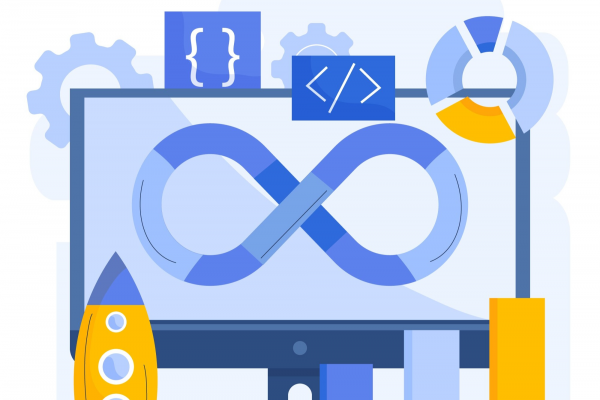In today’s smart factories, the integration of cutting-edge technologies like artificial intelligence (AI) and digital twins is revolutionizing how industries operate. Predictive maintenance, in particular, has gained significant attention as a key application of these technologies, helping manufacturers reduce unplanned downtime, improve efficiency, and optimize asset management. By using AI-enabled digital twins, smart factories are moving toward a future where machinery health is continuously monitored, and maintenance is predicted with high accuracy, saving both time and cost.
The Role of AI in Predictive Maintenance
AI plays a crucial role in predictive maintenance by enabling real-time analysis of data collected from factory equipment. Using machine learning algorithms, AI systems can detect early signs of wear and tear, irregularities, or potential failures before they result in equipment breakdowns. This proactive approach ensures that potential issues are identified before they escalate, reducing downtime and maintenance costs.
According to Statista, the predictive analytics market was valued at $5.29 billion in 2020 and is projected to grow to $41.52 billion by 2028. This staggering growth highlights the increasing demand for AI-driven insights in business operations.
In predictive maintenance, AI analyzes vast amounts of sensor data from machines, such as vibration, temperature, pressure, and rotational speed. This real-time analysis enables highly accurate predictions of when equipment is likely to fail, allowing maintenance teams to take proactive measures. AI’s ability to identify patterns ensures that potential failures are flagged early, reducing unexpected breakdowns and costly repairs.
Examples of AI in Predictive Maintenance:
- AI can detect abnormal vibrations in machinery that indicate potential mechanical failure.
- AI-driven temperature monitoring systems can spot irregularities in heating or cooling units before they overheat or malfunction.
By minimizing the risk of unexpected breakdowns, AI helps factories avoid costly downtime, improve production schedules, and ensure operational continuity. This shift to a proactive maintenance approach enhances not only the longevity of equipment but also the overall efficiency of the production line.
Digital Twins: The Virtual Replicas Powering Predictive Maintenance
A digital twin is a virtual representation of a physical object, system, or process. In smart factories, digital twins serve as dynamic models of machinery, capturing real-time data from sensors embedded in the equipment. These digital models mirror the exact working conditions of their physical counterparts, allowing manufacturers to monitor equipment performance, detect anomalies, and predict potential failures without disrupting operations.
For predictive maintenance, digital twins provide manufacturers with a comprehensive view of equipment health, including historical performance data, real-time sensor data, and simulations of future operating conditions. The real power of digital twins lies in their ability to combine multiple data streams to create a living, evolving model of machinery that reflects its actual state at any given moment.
Benefits of Digital Twins in Predictive Maintenance:
- Real-time monitoring: Digital twins enable continuous tracking of equipment performance, providing real-time insights into machinery health.
- Accurate simulations: By running simulations based on real-world data, manufacturers can predict how equipment will respond to various conditions.
- Enhanced troubleshooting: Digital twins allow maintenance teams to test different maintenance strategies in a virtual environment, identifying the most effective solution before applying it in the real world.
Digital twins make it possible to identify inefficiencies and anomalies early, reducing the likelihood of unplanned downtime. They also allow manufacturers to optimize maintenance schedules by predicting exactly when a machine will need attention, rather than relying on time-based maintenance practices that may result in unnecessary downtime.
How AI Powers Digital Twins in Smart Factories
AI and digital twins work hand in hand to create a smart, predictive maintenance ecosystem. AI enhances the capabilities of digital twins by processing data from machines and predicting future outcomes. For instance, AI algorithms can analyze data trends from digital twins, learning from historical performance data to predict how equipment will behave under certain conditions.
AI-Powered Capabilities in Digital Twins:
- Predictive Analysis: AI processes the data collected by digital twins to predict when components are likely to fail. By continuously refining these predictions based on real-time data, AI makes the digital twin more accurate over time.
- Scenario Simulations: AI can simulate different operational scenarios within the digital twin, allowing manufacturers to foresee potential challenges or disruptions and plan accordingly.
- Autonomous Decision-Making: With AI at the core of digital twins, smart factories can automate some maintenance decisions. For example, AI might schedule routine maintenance or make minor adjustments to machinery settings based on real-time data from the digital twin.
According to Statista, the global factory automation market is expected to reach over $368 billion by 2025, growing at a compound annual rate of 8.8%. The adoption of AI-powered digital twins is a key factor driving this growth, as manufacturers seek to invest in smarter, more efficient factory operations that can handle the complexities of modern production.
Preventing Unplanned Downtime with AI and Predictive Maintenance
One of the greatest benefits of applying AI in predictive maintenance is its ability to prevent unplanned downtime. In traditional maintenance models, repairs are often reactive, addressing problems after they arise. This reactive approach leads to costly disruptions in production schedules and, in severe cases, significant financial losses. However, with AI-powered predictive maintenance, factories can shift to a proactive maintenance strategy.
By analyzing real-time data and predicting when machines are likely to fail, AI allows maintenance teams to schedule repairs at optimal times, ensuring minimal impact on production. In many cases, maintenance can be scheduled during planned downtime or low production periods, reducing disruption to the production line.
Impact of AI-Powered Predictive Maintenance:
- Reduced Downtime: AI’s ability to anticipate equipment failures ensures that repairs are carried out before breakdowns occur, reducing downtime by as much as 30-50%.
- Cost Savings: Predictive maintenance reduces unnecessary repairs and extends the life of machinery, lowering overall maintenance costs by an estimated 10-20%.
- Improved Safety: AI detects issues early, allowing operators to prevent hazardous conditions, improving worker safety in factories.
Expanding the Capabilities of Predictive Maintenance
As AI and digital twin technologies continue to advance, the capabilities of predictive maintenance will only expand. The integration of AI with other advanced technologies, such as edge computing and the Internet of Things (IoT), will allow factories to process data faster, enabling more accurate and timely predictions.
Future Developments in Predictive Maintenance:
- Edge AI: Edge computing will enable AI to process data closer to the source, reducing latency and enabling real-time decisions on the factory floor.
- AI-Driven Maintenance Autonomy: In the future, AI may automate maintenance tasks, allowing machines to self-correct minor issues before they escalate into larger problems.
- Integration with IoT Devices: The Internet of Things (IoT) will expand the range of data available for predictive maintenance, with sensors on every machine providing real-time insights into every aspect of factory operations.
According to IDC, the impact of digital twins is set to expand significantly. By 2027, 35% of G2000 companies will employ supply chain orchestration tools featuring digital twin capabilities, with the aim of boosting supply chain responsiveness by 15%. Furthermore, by 2029, 80% of auto insurers leveraging digital twin technology will focus on accident recreation, potentially reducing casualty claims adjustment expenses and fraud losses by 40%.
Conclusion: The Future of Predictive Maintenance in Smart Factories
AI-enabled digital twins are revolutionizing predictive maintenance in smart factories by providing manufacturers with real-time insights into their equipment’s health and performance. By combining AI’s predictive capabilities with the comprehensive data provided by digital twins, factories can avoid unplanned downtime, optimize maintenance schedules, and improve overall efficiency.
As the global factory automation market continues to expand, the integration of AI and digital twins will become even more critical in shaping the future of smart manufacturing. These technologies are not only improving the operational efficiency of factories but also driving innovation across the manufacturing sector.
By partnering with industry leaders like STL Digital, manufacturers can harness the full potential of AI and digital twins to enhance predictive maintenance, streamline operations, and stay ahead in an increasingly competitive marketplace.



